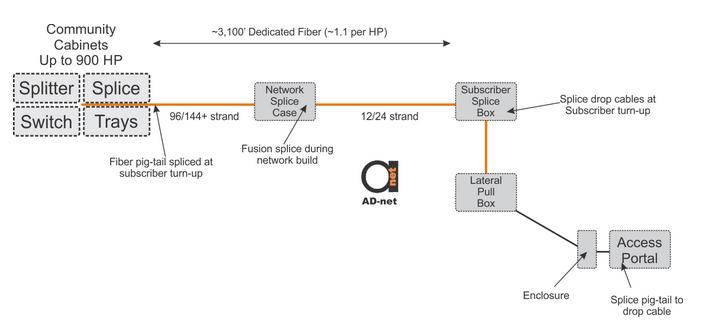The largest cost for the network structure is the deployment of the fibers and other equipment. The largest component of deployment is the construction, and it cost can have great impact on the overall cost. On the analysis stage of outside plant the required materials, components, labor costs for the aerial and underground deployments should be calculated. Based on this information the most cost efficient place should be determined.
It should be noted that cost would be different not only from city to city, but even from neighborhood to neighborhood. The costs would vary depending on the structure density and if either aerial or underground plant is chosen. Optimal engineering design, should be flexible enough to be adjusted to any strategy chosen for the network.
If we think about the optimal location for the termination point, it should be between 700 and 900 potential end users. In a high density area that number would be more than 1500 and in large metro area it would be over 5000.

Figure 1. The ‘First Mile.’
Lets decide for simplicity, that each subscriber line and at the property line of every potential subscriber. The fibers would be placed up to the property line for every residence and business. For the cost reduction the distribution network is run only on one side of the street, with lines that would be crossing the street if there is some property. During engineering, the amount of splices per subscriber is calculated, and if the design requires more than one splice per home – the design will be most likely revised.
Designer should note that even if the FTTx PON network is chosen for today deployment, the design should be flexible enough to change to the active design, if it would be required in the future.


